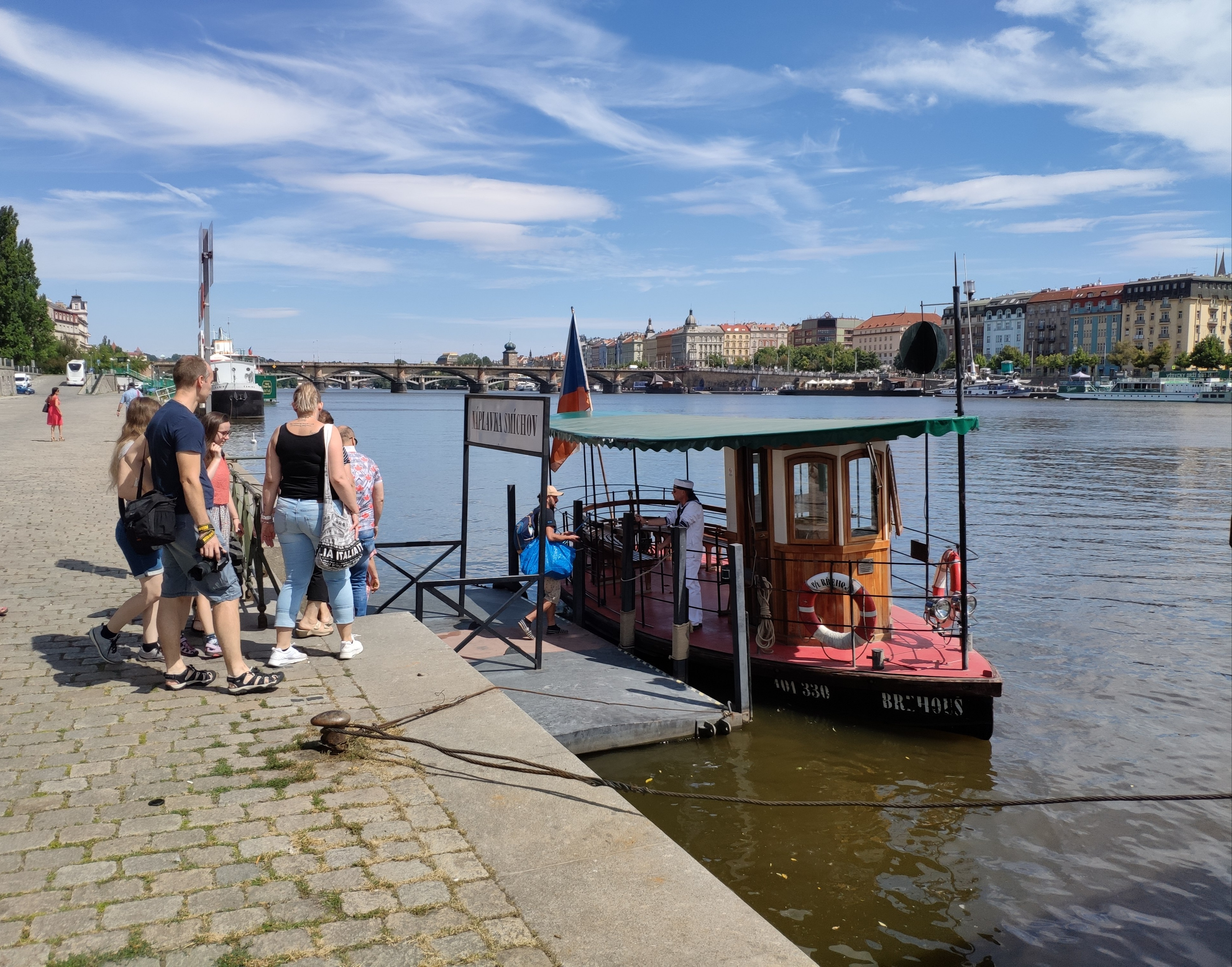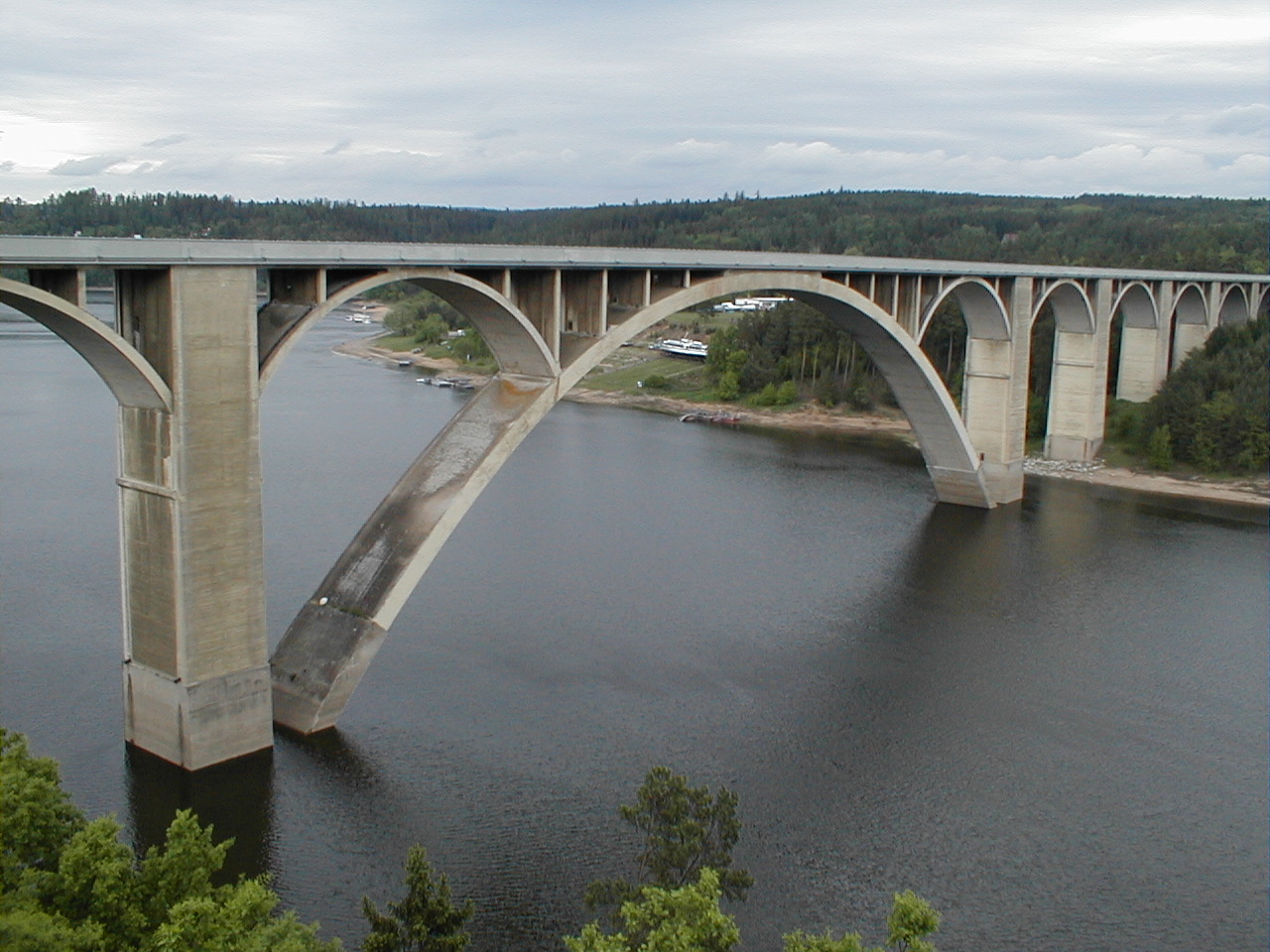|
Podolsko Bridge
The Podolsko Bridge is an arch bridge that spans the Vltava between Podolsko and Temešvár in Písek District, Czech Republic. At the time of its completion in 1942, it was the longest arch bridge in Czechoslovakia. In May 1945 during World War II, elements of the U.S. 4th Armored Division took over the western end of the bridge and near by village of Temesvar, marking the farthest point the Western Allied Powers moved East on the Western Front. Design was by the Ministry of Public Works. Experimental Stress Analysis photoelasticity was by Jaroslav Josef Polívka of the University of California. After the Orlík Dam was completed in 1961, the Vltava rose 19 meters and covered part of the supports. References *"Contractor Meets Close Design Tolerances in Building Long-Span Concrete Arch Bridge" J. J. Polivika, ''Civil Engineering'', ASCE American Society of Civil Engineers The American Society of Civil Engineers (ASCE) is a tax-exempt professional body founded in 1852 ... [...More Info...] [...Related Items...] OR: [Wikipedia] [Google] [Baidu] |
Arch Bridge
An arch bridge is a bridge with abutments at each end shaped as a curved arch. Arch bridges work by transferring the weight of the bridge and its structural load, loads partially into a horizontal thrust restrained by the abutments at either side, and partially into a vertical load on the arch supports. A viaduct (a long bridge) may be made from a series of arches, although other more economical structures are typically used today. History Possibly the oldest existing arch bridge is the Mycenaean Greece, Mycenaean Arkadiko Bridge in Greece from about 1300 BC. The stone corbel arch bridge is still used by the local populace. The well-preserved Hellenistic Eleutherna Bridge has a triangular corbel arch. The 4th century BC Rhodes Footbridge rests on an early voussoir arch. Although true arches were already known by the Etruscans and ancient Greeks, the Ancient Rome, Romans were – as with the Vault (architecture), vault and the dome – the first to fully realize the ... [...More Info...] [...Related Items...] OR: [Wikipedia] [Google] [Baidu] |
Vltava
The Vltava ( , ; ) is the longest river in the Czech Republic, a left tributary of the Elbe River. It runs southeast along the Bohemian Forest and then north across Bohemia, through Český Krumlov, České Budějovice, and Prague. It is commonly referred to as the "Czech national river". Etymology Both the Czech name ' and the German name ' are believed to originate from the old Germanic words ' 'wild water' (compare Latin '). In the ' (872 AD) it is called '; from 1113 AD it is attested as '. In the ' (1125 AD) it is attested for the first time in its Bohemian form, '. Course The Vltava originates by a confluence of two rivers, the Teplá Vltava, which is longer, and the Studená Vltava, originating in Bavaria. From a water management point of view, the Vltava and Teplá Vltava are one river with single numbering of river kilometres. The Teplá Vltava originates in the territory of Kvilda in the Bohemian Forest at an elevation of , on the slope of the Čern� ... [...More Info...] [...Related Items...] OR: [Wikipedia] [Google] [Baidu] |
Temešvár
Temešvár is a municipality and village in Písek District in the South Bohemian Region of the Czech Republic. It has about 100 inhabitants. Temešvár lies approximately north-east of Písek, north of České Budějovice, and south of Prague Prague ( ; ) is the capital and List of cities and towns in the Czech Republic, largest city of the Czech Republic and the historical capital of Bohemia. Prague, located on the Vltava River, has a population of about 1.4 million, while its P .... Demographics References External links * Villages in Písek District {{SouthBohemia-geo-stub ... [...More Info...] [...Related Items...] OR: [Wikipedia] [Google] [Baidu] |
Písek District
Písek District () is a Okres, district in the South Bohemian Region of the Czech Republic. Its capital is the town of Písek. Administrative division Písek District is divided into two Districts of the Czech Republic#Municipalities with extended competence, administrative districts of municipalities with extended competence: Písek and Milevsko. List of municipalities Towns are marked in bold and market towns in ''italics'': Albrechtice nad Vltavou – ''Bernartice (Písek District), Bernartice'' – Borovany (Písek District), Borovany – Boudy – Božetice – Branice – Cerhonice – Chyšky – Čimelice – Čížová – Dobev – Dolní Novosedly – Dražíč – Drhovle – Heřmaň (Písek District), Heřmaň – Horosedly – Hrazany – Hrejkovice – Jetětice – Jickovice – Kestřany – Kluky (Písek District), Kluky – Kostelec nad Vltavou – Kovářov – Kožlí (Písek District), Kožlí – Králova Lhota (Písek District), Králova Lhota – Křenovi ... [...More Info...] [...Related Items...] OR: [Wikipedia] [Google] [Baidu] |
World War II
World War II or the Second World War (1 September 1939 – 2 September 1945) was a World war, global conflict between two coalitions: the Allies of World War II, Allies and the Axis powers. World War II by country, Nearly all of the world's countries participated, with many nations mobilising all resources in pursuit of total war. Tanks in World War II, Tanks and Air warfare of World War II, aircraft played major roles, enabling the strategic bombing of cities and delivery of the Atomic bombings of Hiroshima and Nagasaki, first and only nuclear weapons ever used in war. World War II is the List of wars by death toll, deadliest conflict in history, causing World War II casualties, the death of 70 to 85 million people, more than half of whom were civilians. Millions died in genocides, including the Holocaust, and by massacres, starvation, and disease. After the Allied victory, Allied-occupied Germany, Germany, Allied-occupied Austria, Austria, Occupation of Japan, Japan, a ... [...More Info...] [...Related Items...] OR: [Wikipedia] [Google] [Baidu] |
4th Armored Division (United States)
The 4th Armored Division was an armored division of the United States Army that earned distinction while spearheading General Patton's Third Army in the European theater of World War II. The 4th Armored Division, unlike most other U.S. armored divisions during World War II, did not officially adopt a nickname for the division during the war. However, their unofficial nickname "Name Enough" came into use postwar; the division commander having said, "Fourth Armored Division was name enough"; "They shall be known by their deeds alone." The 4th was named the "Breakthrough" division in 1954, but that name was eventually discontinued. History The 4th Armored Division was activated prior to American entry into World War II on 15 April 1941 at Pine Camp, New York under the command of Brigadier General Henry W. Baird. The division was formed with a cadre from the 1st Armored Division and initially numbered 3,800 men, reaching 10,000 by the end of May. In October, the division fu ... [...More Info...] [...Related Items...] OR: [Wikipedia] [Google] [Baidu] |
Western Front (World War II)
The Western Front was a European theatre of World War II, military theatre of World War II encompassing Denmark, Norway, Luxembourg, Belgium, the Netherlands, the United Kingdom, French Third Republic, France, and Nazi Germany, Germany. The Italian campaign (World War II), Italian front is considered a separate but related theatre. The Western Front's 1944–1945 phase was officially deemed the European Theater of Operations, United States Army, European Theater by the United States, whereas Italy fell under the Mediterranean Theater of Operations, United States Army, Mediterranean Theater along with the North African campaign. The Western Front was marked by two phases of large-scale combat operations. The first phase saw the capitulation of Luxembourg, Netherlands, Belgium, and France during May and June 1940 after their defeat in the Low Countries and the northern half of France, and continued into an air war between Germany and Britain that climaxed with the Battle of Brita ... [...More Info...] [...Related Items...] OR: [Wikipedia] [Google] [Baidu] |
Photoelasticity
In materials science, photoelasticity describes changes in the optical properties of a material under mechanical deformation. It is a property of all dielectric media and is often used to experimentally determine the stress distribution in a material. History The photoelastic phenomenon was first discovered by the Scottish physicist David Brewster, who immediately recognized it as stress-induced birefringence. That diagnosis was confirmed in a direct refraction experiment by Augustin-Jean Fresnel. * Reprinted in H. de Senarmont, E. Verdet, and L. Fresnel (eds.), ''Oeuvres complètes d'Augustin Fresnel'', vol. 1 (1866)pp. 713–18* Translated as Experimental frameworks were developed at the beginning of the twentieth century with the works of E.G. Coker and L.N.G. Filon of University of London. Their book ''Treatise on Photoelasticity'', published in 1930 by Cambridge Press, became a standard text on the subject. Between 1930 and 1940, many othe ... [...More Info...] [...Related Items...] OR: [Wikipedia] [Google] [Baidu] |
Jaroslav Josef Polívka
Jaroslav Josef Polivka (20 April 1886 – 9 February 1960), Czech structural engineer who collaborated with Frank Lloyd Wright between 1946 and 1959. Jaroslav Josef Polivka a.k.a. J. J. Polivka Civil Engineer was born in Prague in 1886. He received his undergraduate degree in structural engineering at the College of Technology in Prague in 1909. He then studied at the Federal Polytechnic Institute in Zurich, Switzerland and at the Prague Institute of Technology, where he earned a doctoral degree in 1917. After serving in the First World War, he opened his own architectural and engineering office in Prague and developed his skills in stress analysis of reinforced concrete, pre-stressed reinforced concrete and steel structures. Polivka became an expert in photo-elastic stress analysis, a technique that examines small-scale transparent models in polarized light. In Prague Polivka worked together with avant-garde Czech architect Josef Havlíček on the Habich Building (1927–28) and ... [...More Info...] [...Related Items...] OR: [Wikipedia] [Google] [Baidu] |
Orlík Dam
Orlík may refer to: * Orlican VT-16 Orlík, Czechoslovakian glider of 1959 * Orlík nad Vltavou, a municipality and village in the Czech Republic ** Orlík Reservoir ** Orlík Castle * 11339 Orlík, an asteroid * Orlík (band), a former Czech band * Orlík, mountain in the Czech Republic People * Emil Orlík (1870–1932), Czech painter, etcher and lithographer See also * Orlik (other) (equivalent word in Polish and other Slavic languages) {{DEFAULTSORT:Orlik ... [...More Info...] [...Related Items...] OR: [Wikipedia] [Google] [Baidu] |
American Society Of Civil Engineers
The American Society of Civil Engineers (ASCE) is a tax-exempt professional body founded in 1852 to represent members of the civil engineering profession worldwide. Headquartered in Reston, Virginia, it is the oldest national engineering society in the United States. Its constitution was based on the older Boston Society of Civil Engineers from 1848. ASCE is dedicated to the advancement of the science and profession of civil engineering and the enhancement of human welfare through the activities of society members. It has more than 143,000 members in 177 countries. Its mission is to provide essential value to members, their careers, partners, and the public; facilitate the advancement of technology; encourage and provide the tools for lifelong learning; promote professionalism and the profession; develop and support civil engineers. History The first serious and documented attempts to organize civil engineers as a professional society in the newly created United States were ... [...More Info...] [...Related Items...] OR: [Wikipedia] [Google] [Baidu] |







